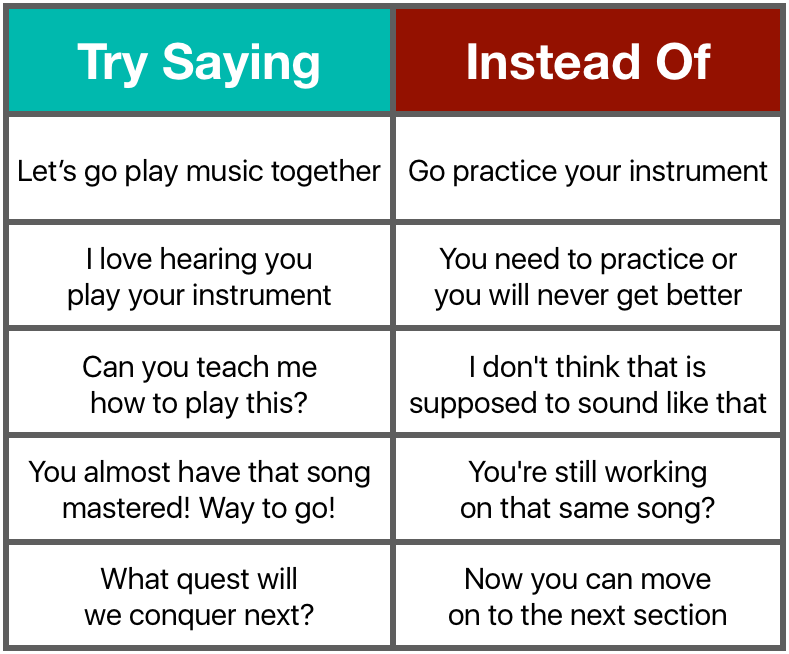How To End The Practice Battle
MUSIC PRACTICE TIPS FOR PARENTS
Getting your kids to practice their instrument at home can be tough. It can be a constant battle trying to convince them to sit down and focus. Learning how to play an instrument is 20% lesson time and 80% practice time at home. When the practice time at home becomes a source of negativity and stress for both the parent and the child, it can result in the child wanting to quit lessons.
Here is how you can turn things around in 5 easy steps so that your home is filled with positivity and music. No more battles, no more arguments and no more stress.
Language
If we change the way we approach the practice sessions, we can change the outcome. If you think about it, how would you respond if someone said “go do that”, or “you need to go get that done”? A small alteration to the way we talk about the practicing, can completely reverse a child’s perspective on the task at hand. I like to have fun with my kids at home whenever we are getting tasks done. Instead of thinking of things as tasks on a long list of “to dos”, we call our tasks “quests” and we conquer them one by one until our mission is complete. Have fun with things in your own way! Here are some ideas you can use to help implement positive language:

Get Involved
Getting involved in their practice at home turns a chore into a shared activity. Even if you have no musical background you can still get involved. Sitting close by while they play, listening to their music and offering words of encouragement if they become frustrated are all wonderful ways to be engaged and offer support. Let your child teach you. Ask them to show you how to play their songs (whether you know how or not this is a great practice strategy). Ask them about their songs, their music and let them know when you see progress. Eventually your child will be independent enough to practice on their own. If you are struggling with practice at home, this doesn’t mean that they aren’t ready for music lessons, this is just a sign that they are not quite ready for practice independence.
Set Goals, Not Timers
Accomplishing a goal is far more valuable than adding up minutes on a practice chart. Every time you sit down, aim to learn something. Do it and then celebrate the accomplishment. You can then decide to make another goal, or be done for the day. Celebrate positive moments. Start with attainable goals. Break hard sections down into small goals. If you’re not sure how to do this, consult with your child’s teacher.
Short Sessions
Keep practice sessions focussed and efficient. If you see your child is becoming frustrated, if their music is starting to sound worse instead of better or if they are simply not paying attention to what is going on, it’s time to stop. Take a break or come back another day. Quality, focus and frequency are key to progress and to keeping things fun and positive.
Communicate With Your Teacher
As soon as practice struggles begin at home, talk to your child’s teacher. They can offer advice and work with you to keep your child’s love of music alive.
Having gone through practice battles with students for almost twenty years, and having gone through it at home with my own children, I guarantee you that if you follow these steps you can revive you child’s positivity and love for musical knowledge. I’ve seen parents turn things around at home within the first week, just from following these steps. The more your child practices, the more they will love to play, and the more they love to play, the more they will practice. The sooner you can get them into a positive practice routine at home, the sooner they will gain their own momentum and independence with their instrument.
Stephanie Nhan
Music Teacher and Mom of three little musicians









